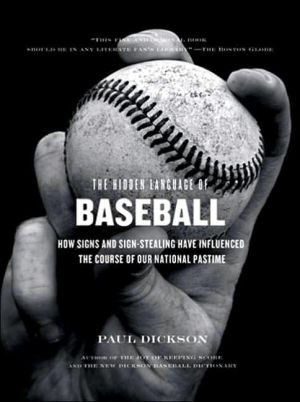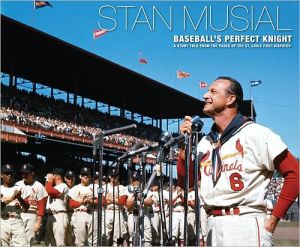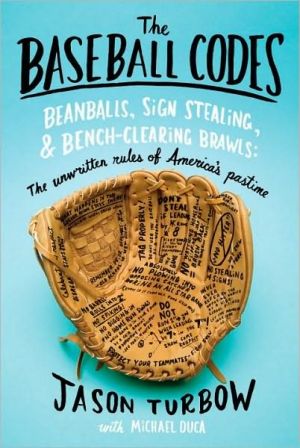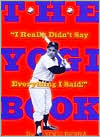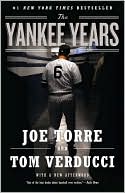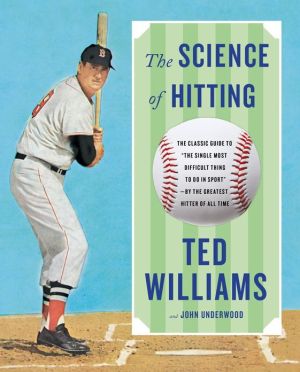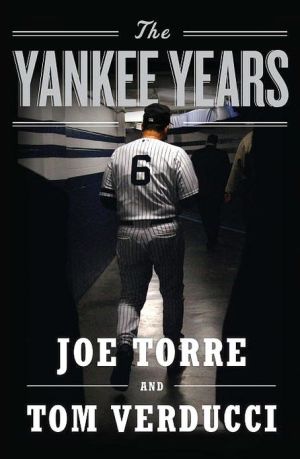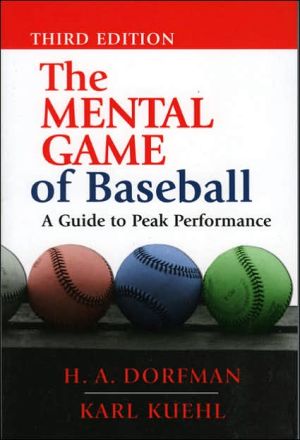Hidden Language of Baseball: How Signs and Sign-stealing have Infuenced the Course of Our National Pastime
Baseball is set apart from other sports by many things, but few are more distinctive than the intricate systems of coded language that govern action on the field and give baseball its unique appeal. During a nine-inning game, more than 1,000 silent instructions are given-from catcher to pitcher, coach to batter, fielder to fielder, umpire to umpire-and without this speechless communication the game would simply not be the same. Baseball historian Paul Dickson examines for the first time the...
Search in google:
Baseball is set apart from other sports by many things, but few are more distinctive than the intricate systems of coded language that govern action on the field and give baseball its unique appeal. During a nine-inning game, more than 1,000 silent instructions are given-from catcher to pitcher, coach to batter, fielder to fielder, umpire to umpire-and without this speechless communication the game would simply not be the same. Baseball historian Paul Dickson examines for the first time the rich legacy of baseball's hidden language, offering fans everywhere a smorgasbord of history and anecdote.Baseball's tradition of signing grew out of the signal flags used by ships and soldiers' hand signals during battle. They were first used in games during the Civil War, and then professionally by the Cincinnati Red Stockings, in 1869. Seven years later, the Hartford Dark Blues appear to be the first team to steal signs, introducing a larcenous obsession that, as Dickson delightfully chronicles, has given the game some of its most historic-and outlandish-moments.Whether detailing the origins of the hit-and-run, the true story behind the home run that gave "Home Run" Baker his nickname, Bob Feller's sign-stealing telescope, Casey Stengel's improbable method of signaling his bullpen, the impact of sign stealing on the Giants' miraculous comeback in 1951, or the pitches Andy Pettitte tipped off that altered the momentum of the 2001 World Series, Dickson's research is as thorough as his stories are entertaining. A roster of baseball's greatest names and games, past and present, echoes throughout, making The Hidden Language of Baseball a unique window on the history of our national pastime.
The Hidden Language of Baseball\ How Signs and Sign Stealing Have Influenced the Course of Our National Pastime \ \ By Paul Dickson \ Walker & Company\ Copyright © 2005 Paul Dickson\ All right reserved.\ ISBN: 0802777198 \ \ \ \ Chapter One\ From Signal Flags and Torches on the Battlefield to the Early Game \ Baseball historian Harold Seymour observed that "to ascertain who invented baseball would be the equivalent of trying to locate the discoverer of fire." The same is true of signs. It is all but impossible to determine the first time a person playing baseball-or baste ball, town ball, rounder, or any of its predecessors-began suggesting plays or pitches to teammates with nonverbal signs.\ Such signals and deceptive signs have a long and diverse history in war-and especially at sea, where signal flags have for centuries been used by warships to communicate with one another. During the Revolutionary War, Yankee privateers sunk or captured 16 of King George III's warships and more than 2,800 merchant ships. The Americans carried collections of foreign flags and used them when traveling in pairs or groups to trick the British: if the enemy was sighted and the commander wanted to order "begin chase," he would raise a British flag at his stern and hoist a pennant; to engage the enemy, the British flag was brought down and replaced with one of any European nation. Simple lantern signals were used on occasion, during the war including Paul Revere's famous "One if by land two if by sea" warning from the Old North Church. In 1855 the British Board of Trade developed the first International Code for peacetime use. It employed eighteen flags to convey 70,000 visual signals, and was adopted by most seafaring nations.\ Coded communications expanded into many areas during the nineteenth century. In 1817 Thomas Gallaudet, a young Congregational minister from Hartford, Connecticut, opened the first free school for the deaf and brought Laurent Clerc, a deaf sign-language teacher from Paris, to America to develop an American signing system. Other sign languages developed, out of necessity, including the code of workers unable to be heard over the din of the factory floor.\ In 1843 Samuel F. B. Morse and Alfred Vail devised the Morse code, and the following year Morse demonstrated the electric telegraph; by 1851 there were 51 telegraph companies in operation. Both coasts were connected by wire in 1861, and there were then 2,250 telegraph offices in operation nationwide. With this came a need for security, as elaborate codes were established for private cable message traffic so that one's commercial rivals could not gain access to important information.\ Indeed, the telegraph was instrumental in both the growth of the American newspaper and the development of baseball as a national sport: It allowed for the instant transmission of scores, standings, and box scores, which could be published in the next morning's edition. In fact, the first known reference to a catcher using signals to move his team into defensive position used the metaphor of the telegraph.\ A July 9, 1860, account of a game between the New York Excelsiors and Rochester's Flour City team observed:\ The Excelsiors are poised in every point of the game, and their superb fielding called forth loud cheers from the spectators. Creighton, their pitcher, we think, handles the ball a little the nicest of any man we ever saw. The catcher was also proficient in his part, and won encomiums for the manner in which he would telegraph advantages to be gained, or the direction as to which one of the fielders should take a "fly." There was no rushing for a ball, but each man of the Excelsiors knew his place and kept it, a point which our ball-players will please make a note of.\ Baseball games played by soldiers during the Civil War were an opportunity for the expanded use of signs. "Undoubtedly, the informal signals devised for the battlefield helped expand the system of baseball signs," says David L. Woods, an authority on military communications.\ In point of fact, baseball was a very popular recreational pastime during the American Civil War, which was also a war with much use of military signals, both informal and longer range. Although formal evidence is lacking, it seems obvious that many of the men playing baseball during free time in that war may have at the same time devised signs that were similar to the more elementary battlefield signals these same men used for self protection while fighting. There has never been any shortage of ingenuity in either American baseball players nor American fighting men.\ The inventor of the system of signals used by the Union and the Confederacy during the Civil War was Albert James Myer, a young army doctor whose medical school thesis explored "A New Sign Language for Deaf Mutes." Many Confederates had been trained by Myer before the war began. Myer freely admitted his indebtedness to the ancient Greek Polybius, who had invented a system of signals using torches, and to the pantomimic signs of the American Indian, with which he had become familiar during excursions into Indian Territory from his prewar post in Texas. In 1860 he applied for a patent on his "Improved System of Signalizing," which was granted on January 29, 1861.\ Myer first called his system flag telegraphy, which he then changed to torch telegraphy, but it was quickly dubbed wig-wag by a Union general. Wig-wag was based on the waving of flags and torches to transmit ciphered signals. His "system" was light enough for a soldier to carry in his backpack and in his head-a white flag with a red square in the center for use against a dark background, a red flag with a white square to be used against light backgrounds, and torches for night use. Telescopes were used to read the signals at distances up to twenty miles.\ Myer's former assistant Lieutenant E. P. Alexander became a major asset to the Confederates, and during the Battle of Bull Run he spotted Union movement and sent a signal-"Look to your left, your position is changed"-which turned the tide of battle and gained Alexander a large promotion, enabling him to direct widespread signaling activity throughout the Confederacy. Signaling by torch, flag, and hand was essential to the South because it lacked telegraphic equipment. But the Confederacy was adept at breaking the Northern code, and on several occasions Myer was forced to change his cipher. The Confederates, on the other hand, changed their ciphers daily and were able to move ciphered signals under the noses of their enemy: A secret wig-wag station was maintained for nearly four years within a block or two of the War Department in Washington and sent hourly reports to a post across the Potomac in Confederate territory."\ Despite their proven utility and tactical importance, there were some who simply did not trust signals during the war. On January 26, 1863, Joseph Hooker, who took over the Army of the Potomac on January 23, 1863, from Ambrose Burnside, dismissed his signal officer, Captain Samuel T. Cushing, and sent him to West Point to establish a signal department there. "The officers charged with the discipline of the Academy said that I had 'ruined the service,' since, by several methods not known to the officers, all the cadets could, by winking their eyes, wiping their lips, tapping on gas pipes, etc., etc., communicate information as to inspections going on, and give intelligence in section rooms as to abstruse questions, etc. etc. and consequently the cadets could engage in all sorts of rascality with far less fear of detection than ever before. I thought it quite a compliment of the usefulness of the code." Cushing was promptly transferred away from West Point, leaving in his wake an unintended system of covert and insubordinate signals. By contrast, Hooker's failure to use signals were largely responsible for his defeat at Chancellorsville.\ Baseball was popular during lulls in the conflict, and the gospel of the game spread, carried to parts of the country where it had not been before. Some rural Southerners first saw it played by Northern prisoners in the Confederate prison at Salisbury, North Carolina, where games were played routinely, and others, such as Albert G. Spalding of Rockford, Illinois learned the game from returning soldiers. There is much personal testimony to the importance of the game in combat zones. George Putnam, a Union soldier stationed in Texas, remembered a particular game. "Suddenly there came a scattering fire of which the three outfielders caught the brunt; the center field was hit and was captured, the left and right field managed to get back into our lines. The attack ... was repelled without serious difficulty, but we had lost not only our center field, but ... the only baseball in Alexandria, Texas.\ One of the best-attended sporting events of the nineteenth century took place on Christmas Day, 1862, when the 165th New York Volunteer Regiment played at Hilton Head, South Carolina, against a team selected from other Union regiments, with nearly forty thousand troops watching. A. G. Mills, who would later become the president of the National League and author of the game's "basic agreement," played in that game.\ Guides and manuals on playing the game proliferated after the Civil War. Haney's Base Ball Book of Reference for 1867 suggested, "Always have an understanding with your two sets of fielders in regard to private signals, so as to be able to call them in closer, or place them out further, or nearer the foul-ball lines, an occasion may require, without giving notice to your adversaries."\ British-born Harry Wright's 1869 Concinnati Red Stockings, the first fully compensated professional baseball team, was also the first formal team of any kind to use coded signs and signals. Ex-cricketer Wright ran his team "like a nicely adjusted machine." The earliest known newspaper account of his innovation-and the first use of the term signs in the context of baseball-came when the team swung west in late September to play teams in California. A reporter for the Daily Alta California wrote on September 26, 1869:\ It must be remembered that the first nine of the Red Stockings are picked men from among the best players of the United States, are in constant practice, and have perfected a stream of telegraphic signals as easily recognized as if spoken words were used. The Red Stockings have really two captains-the ostensible one in the position of "centre field," [who] directs movements of the fielders, and the other is the catcher, who indicates by signs to the pitcher and base-keepers the proper thing to do at the right moment.\ The next day's edition of the Alta contained an intriguing piece of commentary:\ The Red Stockings have arranged a set of orders so brief that frequently only the name of the player is called and he hastens to do what is requisite: an instance of their alacrity and perfect understanding was given on Saturday-a sky ball was sent between short-stop and right field, for which either might have gone, but the captain called "McVey," and right field at once put himself in position to catch it, but the captain also called "Wright" in the same breath, and short-stop ran and dropped on his knee under McVey's hands, so that if missed by the first it could still be caught before reaching the ground.\ Thus, early in baseball's history the catcher's central role in orchestrating the defensive effort, including the moving of fielders was clearly established. More than any other player, the catcher can see all that is happening on the playing field, can observe the batter at close quarters, and gets to see the batters and observe their peculiarities on a much more regular basis. The use of the military term battery to describe the pitcher and catcher as a unit was also introduced, with the pitcher playing the role of the man who aims and fires the cannon and the catcher the man who calls the shot.\ Sign-stealing early on became an established part of the game. Although it will probably never be known when the first attempts were made, baseball writer Dan Daniel traced allegations of sign-stealing back in 1876, the year the National League was founded, when that league's Hartford Dark Blues were publicly accused of taking its opponents' signals. "There was a little shack outside the park, hung off a telegraph pole. A lot of dope came out of that little 'office.'" Though it would be years before this would be known as sign-stealing-the players called it tipping off the signs, clearly implying that it was the opposition guilelessly giving away the signs to those accepting the tips-the tactic had great natural appeal as both a challenge and an opportunity.\ Signs and the lore surrounding them became part of the culture of baseball as the game progressed in its early years. Larry Corcoran of the Chicago White Stockings is widely credited as the first pitcher to work out a system of signals with his catcher. Corcoran's system involved his catcher moving a wad of tobacco to different sides of his mouth. Clearly the system worked, as Corcoran won forty-three games in his rookie season of 1880. Another account credits Silver Flint with the tobacco signal, while a third suggests that Chicago's catcher-outfielder Mike "King" Kelly invented the modern system of finger signals in which one finger was a call for a fastball and two for a curve.\ Beginning in the late 1870s, as "management" became a larger part of the game, coaches began patrolling the first- and third-base lines, their roles based on military convention. The manager was the general, and his coaches were lieutenants conveying his instructions to the players to keep the offensive attack moving. A new kind of signaling then emerged, called wig-wagging after Myer's Civil War signal system, that allowed the coaches to pass along coded instructions to the batter and base runners.\ In 1887 coaches were formally recognized in the official rules, and coaches' boxes were established fifteen feet from the baselines to contain Cap Anson and other noisy distractors who ran up and down the baselines baiting and belittling the opposition. The first- and third-base coaches began to systematically steal from the opposition and pass information along to the batter. In his 1888 primer, Base-Ball-How to Become a Player, John Montgomery Ward, shortstop of the New York Giants, explained how coaches, were in a fine position to steal signs from a catcher and then "make some remark with no apparent reference to the batter, but really previously agreed upon, to notify him of what kind of ball is going to be pitched. This known, the batter has nothing to do but pick out his ball and lay on it with all his weight."\ \ Continues...\ \ Continues...\ \ \ \ Excerpted from The Hidden Language of Baseball by Paul Dickson Copyright © 2005 by Paul Dickson.\ Excerpted by permission.\ All rights reserved. No part of this excerpt may be reproduced or reprinted without permission in writing from the publisher.\ Excerpts are provided by Dial-A-Book Inc. solely for the personal use of visitors to this web site. \ \
